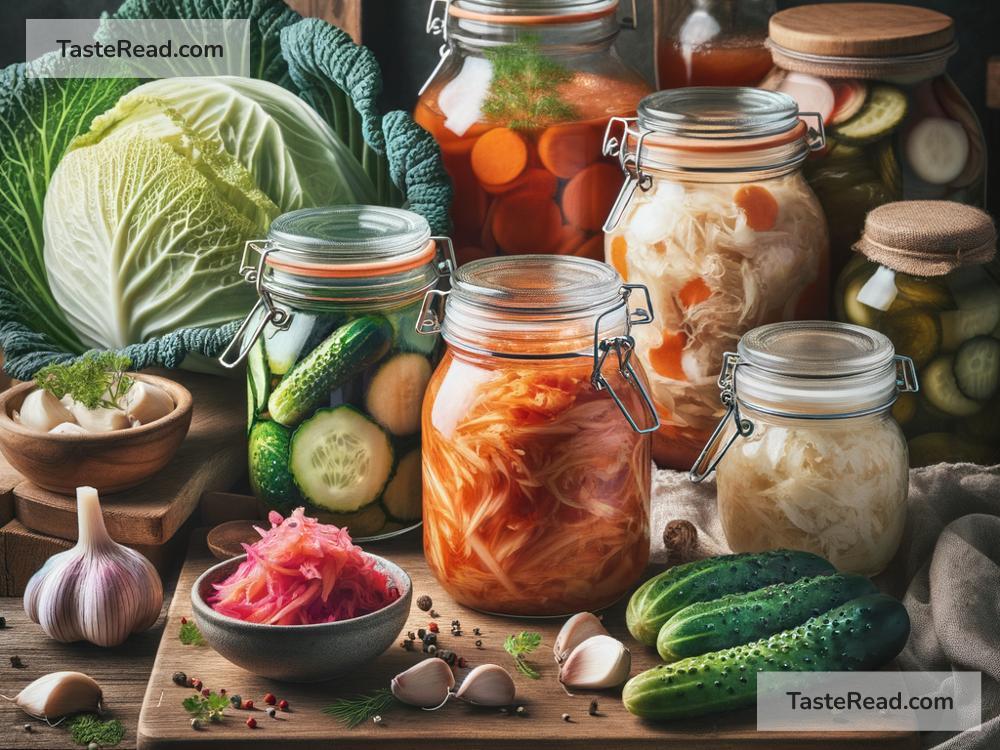The Role of Natural Fermentation in Enhancing Vegetable Taste
Vegetables are a staple food in diets across the world. They are packed with essential nutrients, vitamins, and minerals that promote good health. While vegetables on their own are fresh and delicious, did you know there is a way to make them even tastier while boosting their health benefits? The secret is natural fermentation. Let’s explore how natural fermentation enhances the flavor of vegetables and why it’s worth trying.
What Is Fermentation?
Fermentation is a natural process where beneficial bacteria and yeast break down sugars in food. This happens in an environment without oxygen, and the result is a change in flavor, texture, and nutritional quality. Fermentation has been used for centuries to preserve vegetables, enhance flavors, and create unique dishes. Sauerkraut, kimchi, and pickles are all examples of fermented vegetables.
How Does Fermentation Improve Vegetable Taste?
- Enhanced Flavor:
When vegetables ferment, the natural bacteria (called lactic acid bacteria) create tangy, complex flavors that tickle the taste buds. These bacteria produce acids that give fermented vegetables a sour taste, while breaking down their natural sugars. This tangy flavor adds depth to vegetables that might otherwise taste a little plain.
For example, cabbage transforms into sauerkraut through fermentation. Raw cabbage is mild, but after fermenting, it develops a vibrant, sour flavor with a pleasant crunch that makes it irresistible.
-
Balanced Sweetness and Acidity:
Fermentation balances the natural sweetness of vegetables with acidity, creating a delightful harmony of flavors. Vegetables like carrots and beets, which are naturally sweet, become more nuanced in flavor after fermenting. The subtle tang enhances their sweetness without overwhelming it. -
Umami Boost:
Umami is often called the “savory” taste and is one of the five basic flavors (along with sweet, sour, salty, and bitter). Fermentation increases the umami in vegetables, making them richer and more satisfying. It’s the same reason fermented foods like cheese and soy sauce taste so delicious. -
Texture Improvement:
Aside from flavor, fermentation can alter the texture of vegetables. Fermented carrots, cucumbers, or radishes retain a crunchiness that makes them enjoyable to eat. The firmness and bite of fermented vegetables pair well with meals, adding both taste and texture variety.
Health Benefits That Improve Taste
The process of fermentation does more than just change the flavor of vegetables; it also enhances their nutritional profile. These added health benefits indirectly make them more enjoyable to eat:
-
Probiotics for Gut Health:
Fermented vegetables are rich in probiotics, which are beneficial bacteria that help keep our digestive systems healthy. Healthy digestion allows us to absorb nutrients more efficiently and can even make us more sensitive to the flavors in food. -
Reduced Bitterness:
For vegetables that are naturally bitter, such as kale or radishes, fermentation helps mellow out those harsh notes. This is especially helpful for people who might shy away from eating vegetables because of bitterness. -
Preservation of Nutrients:
Natural fermentation helps preserve vitamins and minerals in vegetables. In some cases, it even increases their availability for absorption. The vibrant flavor of fermented vegetables often comes hand-in-hand with the knowledge that you’re eating something highly nutritious, making the experience more enjoyable.
Traditional Examples of Fermented Vegetables
Cultures around the world use fermentation to enhance the flavor of vegetables. Here are a few well-known examples:
- Sauerkraut (Germany): Fermented cabbage that’s tangy and crunchy. It’s often eaten with sausages or added to salads and sandwiches.
- Kimchi (Korea): A spicy and sour mix of fermented cabbage, radishes, and spices. Kimchi’s bold flavors complement rice, noodles, and stir-fries.
- Pickles (Global): Cucumbers are fermented to make pickles, which feature a salty, sour crunch. Pickles are a popular addition to burgers, sandwiches, or eaten as snacks.
- Curtido (El Salvador): Fermented cabbage slaw with onions and carrots, often served with pupusas.
These dishes showcase how fermentation turns raw vegetables into flavorful creations loved worldwide.
Tips for Trying Fermentation at Home
If all this talk about flavor has made you curious, why not try fermenting vegetables at home? It’s surprisingly simple. All you need are vegetables, salt, water, and a jar. Here’s a basic process:
- Clean and chop your vegetables (e.g., cabbage, cucumbers, carrots).
- Dissolve salt in water to create a brine. Usually, 1-3 tablespoons of salt per quart of water works well.
- Submerge the vegetables completely in the brine inside the jar.
- Cover the jar loosely to allow gas to escape, and leave it at room temperature for several days to ferment.
- Taste the vegetables each day until they reach your desired flavor, then move the jar to the fridge.
Homemade fermented vegetables are a fun way to experiment with flavors and discover what you enjoy most!
Final Thoughts
Natural fermentation is a magical process that transforms ordinary vegetables into tangy, flavorful delights. Not only does it enhance their taste, but it also provides numerous health benefits. By embracing fermentation, you can explore new flavors, improve your gut health, and create delicious snacks or sides to complement your meals. Once you taste the satisfying crunch and vibrant tang of fermented vegetables, you may never look at plain veggies the same way again. Why not give it a try? Your taste buds will thank you!


